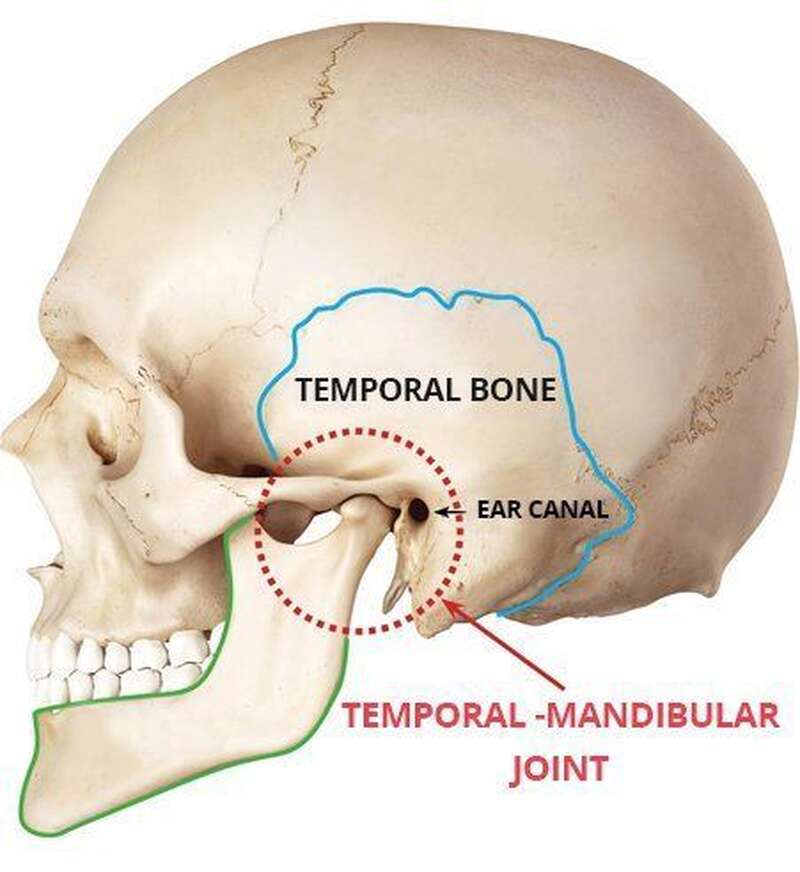
TMJ Disorders
The jaw joint is known as the temporomandibular joint and often what dental practitioners refer to as the TMJ.
Some cases of TMJ disorders are significant enough to undergo surgical intervention.

The jaw joint is what connects your mandible (lower jaw) to the temporal bones of your skull. It is found on both lateral sides of the face directly in front of your ears. To find the TMJ, placing two fingers anterior to your ears while opening and closing can help.
Multiple factors can contribute to jaw pain, some include; grinding or cleaning the teeth, inflammation of the TMJ, underlying systemic conditions or trauma to the jaw. It is not uncommon to have a combination of causes and therefore treating jaw problems can usually involve multiple approaches. Some cases of TMJ disorders are significant enough to undergo surgical intervention.
How to relieve joint pain
If your jaw is in pain it is best not to over stretch or further aggravate it. Certain jaw massages can help relieve immediate jaw pain while ongoing physiotherapy or surgical intervention may be advised for long term solutions depending on the extent, duration and cause of jaw pain.
How to massage the jaw joint?
Physiotherapy treatment to relieve jaw pain may be advised by your dental practitioner. A dental visit can help determine the cause of your jaw pain and therefore direct focus to the muscles involved. A physiotherapist or TMJ specialist can help manipulate these muscles through exercises and massages. You may be given a brief TMJ anatomy lesson because in order to massage the jaw it is important to acknowledge the position and direction of each jaw muscle.
More Frequently Asked Questions About TMJ Disorders
- Why does my jaw joint click?Mild clicking of the jaw is not uncommon. In most cases clicking of the jaw while opening/closing is not associated with pain, tenderness or limitations to jaw movement and therefore does not require treatment.
- Why is my jaw joint swollen?Facial swelling around the jaw, especially the lower jaw can be life threatening if left untreated as it may be related to an infection. If you are experiencing facial swelling is it best to seek immediate medical advice.
- Can wisdom teeth cause TMJ pain?Wisdom teeth are located most posterior in your oral cavity and therefore infection in this region can cause pain during palpation or when biting. Pain from wisdom teeth can sometimes radiate to the ear and limit jaw movement.
- Can botox help TMJ pain?Recent research suggests therapeutic use of Botox injections into the temporalis and masseter muscles are effective in relieving TMJ and migraine dependent pain. Botox intervention is generally considered for individuals with long term and ongoing TMJ disorders.
- Can braces help TMJ disorders?It may be common for patients with TMJ disorders to have misaligned or occlusal imperfections however it has not been strongly suggested that orthodontic therapy is required to resolve orofacial/jaw pain. Orthodontic treatment may be considered an adjunct to treatment if determined by an orthodontist however it should not be expected to cure TMD pain.
- References and Further Reading on TMJ1. Aggarwal, A., & Keluskar, V. (2012). Physiotherapy as an adjuvant therapy for treatment of TMJ disorders. General dentistry, 60(2), e119-22.
2. Liu, Y., Dai, G., Li, L. I., & Yang, W. (2014). Effects of Western Massage Combined with Muscle Energy Technique on Masticatory Muscle Disorders. Chinese Journal of Rehabilitation Theory and Practice, (12), 1165-1167.
3. https://www.gavinpublishers.com/admin/assets/articles_pdf/1515586469article_pdf2057298609.pdf
4. https://pdfs.semanticscholar.org/71bd/04a7cb27f4ae7943ce2c1a12205e9c36f8e6.pdf
5. Batbayar, B. (2018). Botox treatment for TMJ-TMD and Migraine pain. Innovation, 12(4), 46.
6. Greene, C. S., Galang-Boquiren, M. T. S., & Bartilotta, B. Y. (2017). Orthodontics and the temporomandibular joint: What orthodontic providers need to know. Quintessence Int, 48, 799-808.